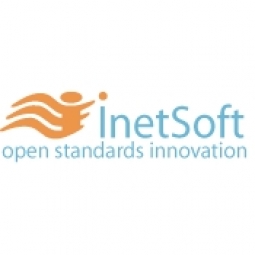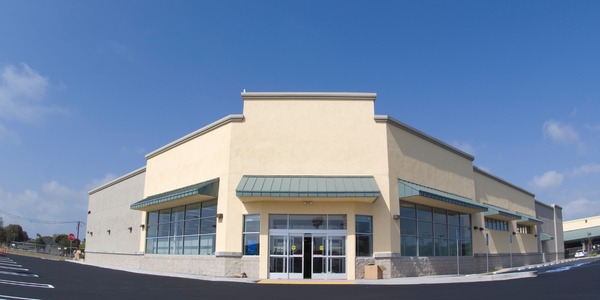公司规模
Mid-size Company
地区
- America
国家
- United States
产品
- InetSoft’s Style Intelligence
技术栈
- Data Analytics
- Business Intelligence
实施规模
- Enterprise-wide Deployment
影响指标
- Cost Savings
- Productivity Improvements
技术
- 分析与建模 - 实时分析
适用行业
- 服装
适用功能
- 销售与市场营销
- 商业运营
用例
- 预测性维护
- 供应链可见性(SCV)
服务
- 数据科学服务
关于客户
T-Formation 是一家私营的服装生产一站式商店。该公司成立于 1987 年,是美国第三大批量印刷厂。T-Formation 的工厂在整个生产生命周期内管理客户订单,包括定制设计、开发、生产和运输。该公司与各种规模和类型的组织合作,从财富 500 强到非营利组织、大学和小型企业。T-Formation 使用单一数据库来管理他们的数据,包括从数据输入和销售到生产、订单管理和运输的所有内容。
挑战
T-Formation 是美国一家大型印刷厂,其内部订单系统解决方案面临挑战,因为其报告功能有限。该系统处理所有销售、总帐、艺术品管理、生产计划、统计、装运、收货和开票,但要将这些数据关联起来以识别机会并不容易。传统的报告形式无法让决策者轻松获取信息。该组织知道有些领域他们无法成功分析,因此希望实施一种工具,让企业一目了然地了解他们是否盈利以及如何更有效地管理合同。
解决方案
为了获得更广泛的业务可见性,T-Formation 在 2012 年初下载了 InetSoft Style Intelligence 的试用版。在最初使用 60 天后,他们决定实施该软件,因为该软件具有高水平的交互性和快速的价值实现时间。使用 4 个月后,他们拥有了 10 个仪表板,可供整个组织使用。InetSoft 通过连接所需数据帮助 T-Formation,第一个仪表板在一周内就启动并运行。凭借 10 个并发最终用户许可证,业务用户能够与仪表板进行交互,达到他们所需的详细程度,并访问他们需要的信息,而无需导出和操作数据。
运营影响
数量效益

Case Study missing?
Start adding your own!
Register with your work email and create a new case study profile for your business.
相关案例.

Case Study
Fire Alarm System and Remote Monitoring Sytem
Fire alarm systems are essential in providing an early warning in the event of fire. They help to save lives and protect property whilst also fulfilling the needs of insurance companies and government departments.Fire alarm systems typically consist of several inter-linked components, such as smoke detectors, heat detector, carbon monoxide, manual call points, sounders, alarm and buzzer. The fire alarm system should give immediate information in order to prevent the fire spread and protect live and property.To get maximum protection a shoe manufacturer in Indonesia opted for a new fire alarm system to monitor 13 production sites spread over 160 hectars. Although the company had an existing fire alarm system, it could not be monitored remotely.It was essential that the new system would be able to be monitored from a central control room. It needed to be able to connect to the existing smoke detector and manual call point. Information should be easily collected and passed on to the Supervisory Control and Data Acquisition (SCADA) system. Furthermore, the system should have several features such as alarm management, auto reporting, being connected to many client computers without additional cost, and run 24/7 without fails. The company also needed a system which could be implemented without changing the architecture of the existing fire alarm system.

Case Study
IoT Applications and Upgrades in Textile Plant
At any given time, the textile company’s manufacturing facility has up to 2,000 textile carts in use. These carts are pushed from room to room, carrying materials or semi-finished products. Previously, a paper with a hand-written description was attached to each cart. This traditional method of processing made product tracking extremely difficult. Additionally, making sure that every cart of materials or semi-finished products went to its correct processing work station was also a problem. Therefore, the company desired an intelligent solution for tracking assets at their factories. They also wanted a solution that would help them collect process data so they could improve their manufacturing efficiency.

Case Study
Retailer Uses RFID Scanner to Improve Efficiency
Patrizia Pepe wished to improve the logistics of their warehouse: accepting incoming goods from their production sites, movement of items throughout
the warehouse, and packaging of goods for distribution to the retail locations. They initially tried to use barcodes for this function. Because barcodes must be individually scanned within a line-of-sight, the acceptance of goods coming into the warehouse was too time consuming. Working with the University of Florence, Patrizia Pepe instituted a five-month pilot project beginning in August of 2009 to test the validity of an RFID solution. The pilot involved tagging of about 60,000 items for the second seasonal collection, and convinced the company to move forward with tagging all items.

Case Study
Monitoring and Controlling Automatic Mixing and Dispensing Machines
As technology advances, textile manufacturing has been transformed from a labor-intensive to a partially or fully automated industry. Automation is significant in all segments of textile production - from spinning to printing, and textile machinery manufacturers are constantly searching for new technologies and automation processes will increase the productivity of their machines. The color paste mixing and dispensing machine is an essential part of the printing and dyeing process. With the advantage of automatically computerized controls and database management, the system can significantly improve its dispensing precision, working efficiency and production quality as well as reducing material consumption.









